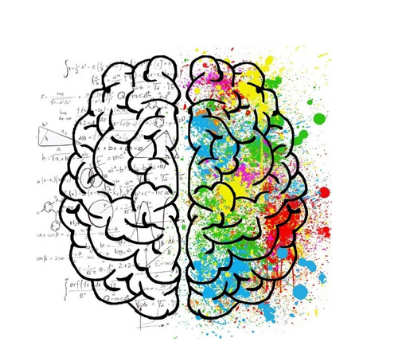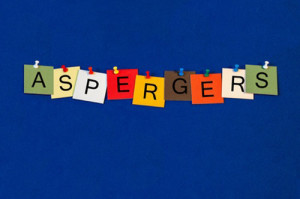Asperger’s syndrome is one of a group of conditions known as pervasive developmental disorders, or PDDs. Autism is also a PDD, albeit a more severe manifestation than Asperger’s. Until recently, adults living with Asperger’s (AS) had received very little attention or support.
Slowly, that is starting to change. More research is being done and as we better understand the symptoms of Asperger’s we are becoming more adept at diagnosis. Our doctors and therapists have developed tests to differentiate Asperger’s from other PDDs and related psychological disorders.

Asperger’s was first described in 1944 by Austrian pediatrician Dr. Hans Asperger. He noticed that some of his young patients seemed withdrawn and uncommunicative. They displayed average or above average intelligence, in some cases showing exceptional talent in one specific area. Clearly, there were strengths and weaknesses associated with the condition. Dr. Asperger wrote extensively about his observations, but his work received scant attention from his peers.
It wasn’t until the 1980s when an English doctor published a series of case studies that AS was given further attention. In 1994, Asperger’s was officially recognized in the Diagnostic and Statistical Manual of Mental Disorders (DSM IV) It has only been in the last decade or so that diagnostic norms and standardized testing have been developed.
What Is Asperger’s In Adults
Do you have a developmental disorder, or are you just different? “Act normally” we are told growing up. But who defines “normal”? What is considered acceptable behavior in one part of the world may be taboo in other cultures. The language, customs and social norms a hundred years ago are very different from those we are used to today.
What it is safe to say, is that while the ways that adults communicate with one another may vary, there is always communication. Relations between people may differ based on gender, age, class and so on. However, people want and need to relate to each other. We strive to find our place in the social structure of our community, regardless of what culture or time period we live in.
There are some individuals who don’t want to (or are unable to) be a part of the human hive. They may lack the necessary social skills to interact with members of their community or even with their own family. In social settings, they feel out of place and awkward. To others, these individuals may come across as strange, selfish or even rude.
This behavior is symptomatic of Asperger’s syndrome. Some of these adults with aspergers, or adult “Aspies” may never have been diagnosed with AS but have lived with it all their lives. They are often of above average intelligence, and may show exceptional talent in their field of expertise. They may find two-way conversations impossible, preferring to ramble on at length about something they themselves find especially fascinating.
Social situations make them uncomfortable and they often act awkwardly or even inappropriately. This often interferes with their ability to form lasting friendships, and even maintain relations with close family members. Physical manifestations of Asperger’s Syndrome include an unwillingness to make eye contact with other people and an inability to understand non-verbal cues. A nudge and a wink or rolling your eyes at someone with Asperger’s is unlikely to elicit any response.
More extreme symptoms are highly ritualized or repetitive patterns of behavior. Pulling at one’s hair or wringing one’s hands can be compulsive activities that may help a doctor diagnose adult Asperger’s. Schedules are very important to those with AS. Any disruption to their daily routine can cause extreme anxiety.
How To Diagnose Asperger’s in Adults?
There are a variety of methods that doctors and therapists use to assist them in their diagnosis of AS. These will involve interviews and questions about a person’s past and current relationships. Any previous psychological evaluations will be taken into account. Sometimes a family member may be invited to sit in on the session to give feedback as well.
Naturally, the therapist will carefully observe the reactions and behavior of the patient during their time together. It is critical that the therapist have experience with other adults that have been diagnosed with Asperger’s. A child or teenager will exhibit somewhat different symptoms from an adult with AS. The longer an individual has lived with the syndrome, the more likely they are to have altered their behavior and routine to accommodate the condition.
Self-diagnosis is now fairly common in individuals with Asperger’s. It has only recently reemerged as a developmental disorder that is receiving research funding and media attention. People are reading about AS and seeing the symptoms in themselves. An immense array of information and opinion can be found on the internet. Individuals who think they may have AS will often find checklists, online tests and so forth.
It is not uncommon for a spouse or family member to recognize signs of Asperger’s syndrome in a loved one. They may suggest that the person speak with a family doctor about arranging for a professional diagnosis and formal AS testing.
Adult Asperger’s Test
Formal tests for Asperger’s syndrome involves finding a specially-trained therapist or neurologist with first-hand experience treating adults with Asperger’s. Your own doctor is unlikely to be able to conduct tests for Asperger’s but may be able to recommend a specialist that you are comfortable with. If not, a local autism support center should be able to provide a referral.
Asperger’s syndrome was only recognized and listed in the Diagnostic and Statistical Manual of Mental Disorders (DSM IV) in 1994. Hence, there are relatively few experienced therapists and standardized tests available for suspected AS cases. The criteria that are included in the DSM IV are particularly concerned with “qualitative impairment in social interaction”.
Examples of these behaviors would include an inability to comprehend and utilize common nonverbal cues like a smile, a wink, or a pat on the shoulder. Individuals who look away during conversation or make inappropriate (or no) facial expressions are displaying possible signs of Asperger’s disorder.
Body posture is also carefully observed when testing for adult AS. Does the patient seem hunched over? Are his arms crossed and his legs tucked under the chair? A therapist who is conducting a test for adult Asperger’s will be watching a patient’s body language while listening to their spoken language.
Short of a diagnosis by a medical professional, there are ways to get a quick and dirty assessment of where a subject might fall on the spectrum. Online tests for Asperger’s in adults have helped many thousands of people seeking immediate (albeit preliminary and qualified) answers. One of the most popular of these is our very own Adult Asperger’s Test. While these tests should never be taken as anything more than educational or informative, they can help with a certain amount of guidance in determining if a subject may be an adult with Asperger’s Syndrome. Our Asperger’s test for adults, thorough and well-respected, can be found here.
There will also be tests that focus on intelligence, pencil and paper and computer-based exercises incorporated into the testing program. As we learn more about the condition, the tests and diagnostic tools that are available to doctors will surely improve.





